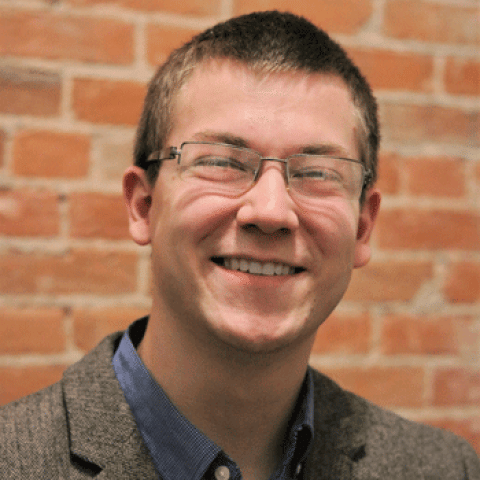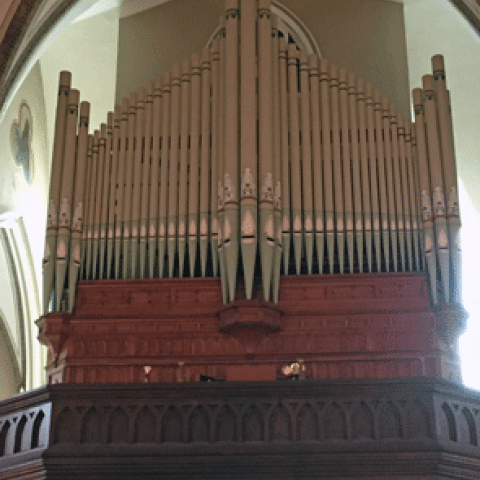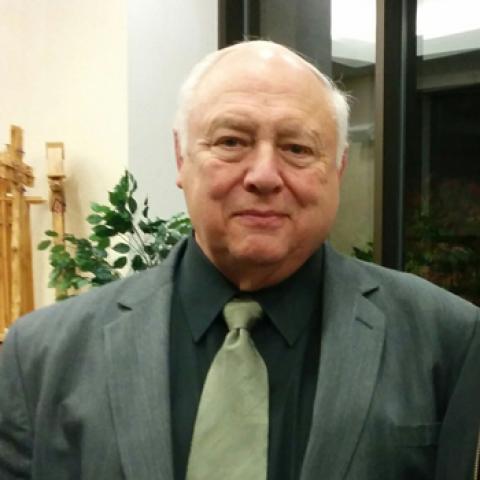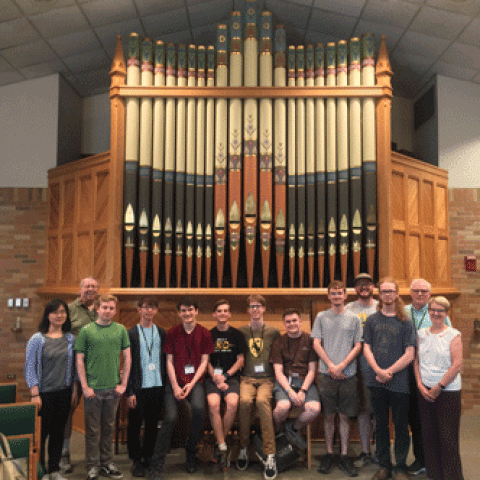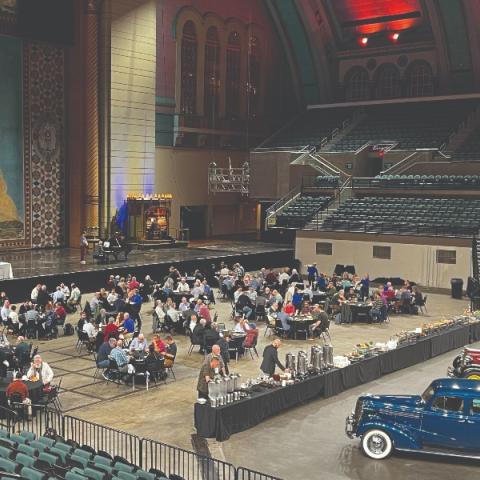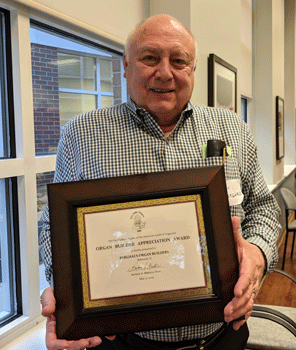
The Fox Valley Chapter of the American Guild of Organists (Illinois) presented Berghaus Pipe Organ Builders, Bellwood, Illinois, with its “Organ Builder Appreciation Award” on May 17.
Chapter dean Barbara Masters gave the certificate to the company’s founder, Len Berghaus, during the chapter’s annual meeting. The chapter had organized a tour of the organ factory in March, and Berghaus provided the participants a glimpse of the many aspects of organbuilding. The May evening was capped off by a performance by Isabelle Demers on the Berghaus organ at St. Raphael Catholic Church, Naperville, Illinois.
For information: www.foxvalleyago.org.

